- About
- Governance
- Our Lands
- Cultural Heritage
- Community Services
- Kema Experiences
- Community Development
- Naache Commons
- Úújǫ Developments
- Employment Opportunities
- Events
- Contact

Royal Proclamation issued by King George III recognizing Aboriginal land ownership and establishing that only the Crown could purchase land from Aboriginal peoples.


Peace River named after peace is reached between the Tsáá? Ché Ne Dane and the Cree at Peace Point.

First trading post established in Dane-zaa territory of Fort Vermillion.


St. John trading post established (re-named Fort St. John in 1921)


The Dane-zaa people acquire horses.


Fort St. John trading post closed following armed conflict with local First Nations.

Gold is discovered in the Peace River Region.

Dominion of Canada is established.

British Columbia joins Canada.


Governor of Hudson’s Bay Company proclaims the Peace River region as having huge potential for mining and agriculture.

Fort St. John post moved to the north side of Peace River to “Old Fort”.

Dane-zaa oppose gold miners heading north to the Klondike until Canada agrees to a Treaty of Peace.

Doig River’s Dane-Uaa ancestors sign Treaty 8 as the Fort St. John Beaver Band.


Montney Reserve is surveyed at 18,168 acres in size for the Fort St. John Beaver Band.


End of the 52-year prohibition against Indians participating in the commercial fishery in British Columbia.

Introduction of Registered Trapline System in British Columbia, resulting in the loss of Aboriginal trapping areas with the federal Indian Agent advising the Indians not to register.

Despite the ongoing urging of the Inspector of Indian Agencies that the federal government not entertain the idea of selling the Montney Reserve, Indian Affairs succumbs to local pressure to open up the reserve for settlement by returning World War II veterans and elicits a surrender from the Band.

Indians gain the right to vote in provincial elections.

The Fort St. John Beaver Band is without reserve lands, living a traditional lifestyle and carrying out their seasonal rounds throughout their territory.

The Indian Act is amended, thereby ending the 24-year prohibition against Indians hiring lawyers and pursuing claims against the government. It also ended the 66-year prohibition against dancing and cultural ceremonies.

End of 87-year exclusion of Indians from provincial policy allowing individuals to acquire land grants.

Despite the establishment of the new reserves, members of the Fort St. John Beaver Band, known as the Tisbi Dane (Muskeg People) squat on Crown land at Peterson’s Crossing, sending their children to Indian Day School under threat that the children would be taken away to residential schools.

Fort St. John Beaver Band splits into Doig River and Blueberry River First Nations.
Local Indian Agent tells the Bands that the mineral rights in the Montney Reserve may have been wrongfully taken from them.

Doig and Blueberry file litigation against Canada in Federal Court about the Montney surrender and the loss of mineral rights.

Doig River and Blueberry River First Nations win the Apsassin case, Blueberry River Indian Band v. Canada in the Supreme Court of Canada and settle compensation with Canada for loss of mineral rights in the Montney reserve.


Doig River First Nation files Treaty Land Entitlement (TLE) claim.

Doig River First Nation opens new Administrative Complex on IR #206.




The Government of Canada accepts Doig River First Nation’s Treaty Land Entitlement claim for negotiation.
Doig River membership participates in the first round of land selection.
Doig River First Nation purchases industrial land in Fort St. John for future urban reserve.

British Columbia agrees to participate in the Treaty Land Entitlement (TLE) negotiations.
Doig River First Nation membership conducts traditional use study to assist in the land selection process.

Doig River and Blueberry River First Nations research and submit a comprehensive genealogy study to negotiate the number of people who were not included in the calculation for reserve land made by the Federal government in 1914 when determining the amount of reserve land to compensate the bands when moving them off the Montney Reserve.
Doig River First Nation establishes a permanent trust to manage funds from the Montney settlement for the long-term benefit of the Nation.


Doig River First Nation membership participates in the second round of Treaty Land Entitlement (TLE) land selections.
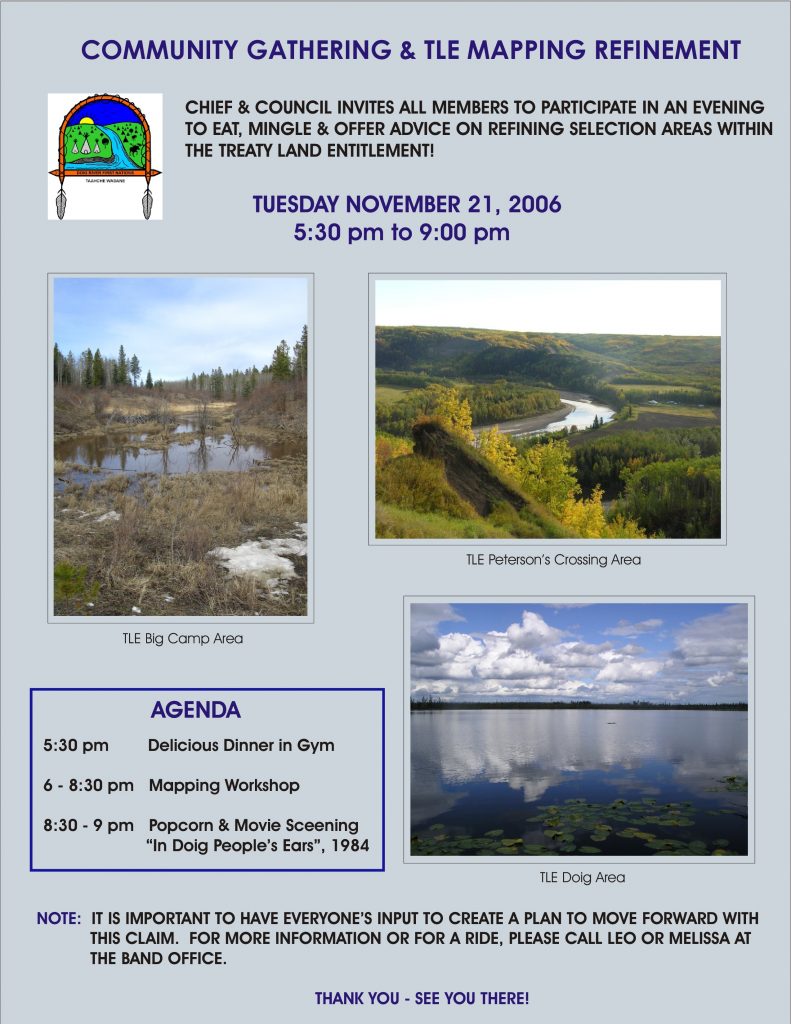


Doig River First Nation membership participates in historical land use study (TLUS) in their traditional territory in Alberta.

Doig River First Nation membership participates in the third round of land selections associated with their Treaty Land Entitlement (TLE) claim.
Doig River and Blueberry River First Nations present expert evidence on life expectancy in 1914 to negotiate the number of people who were not counted for land/reserve compensation in 1914 as a result of the bands being moved off the Montney Reserve.

Doig River First Nation hosts first TLE World Cafe.
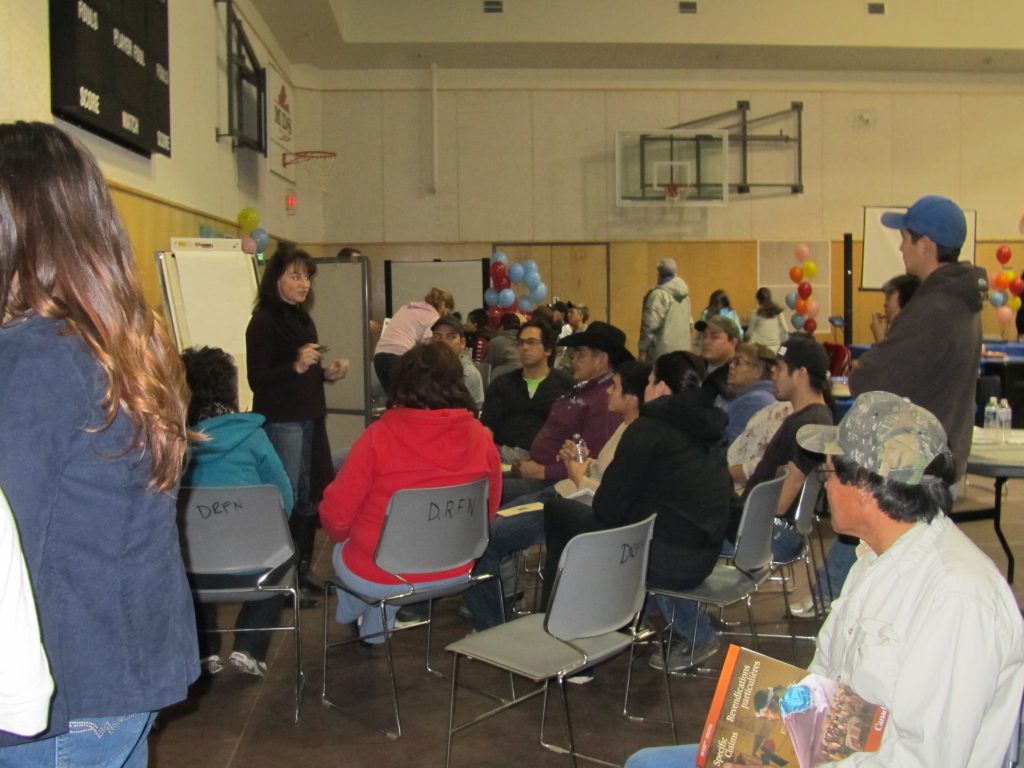

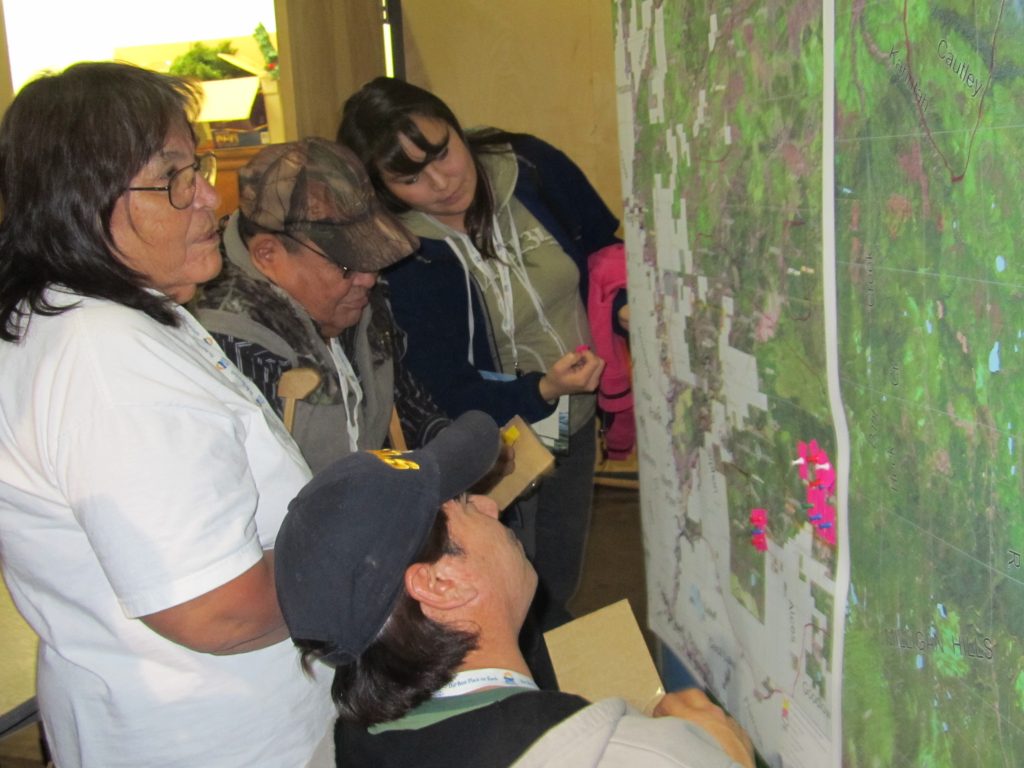
Alberta advises that it will consider DRFN land selections in Alberta associated with their Treaty Land Entitlement (TLE) claim.
TLE Community Dinner at Blueberry River First Nation
Doig River First Nation signs Memorandum of Understanding (MOU) with the City of Fort St. John to establish a new chapter of cooperation and good working relationship with the City of Fort St. John as the Nation pursues urban reserve opportunities in the community.


Doig River First Nation establishes K’ih tsaa?dze Tribal Park.



Joint studies on valuation for loss of use of land due to the move from Montney Reserve by both Blueberry River and Doig River First Nations are finalized and Canada puts treaty land entitlement (TLE) negotiations on hold to develop a settlement offer.
Doig River First Nation signs memorandum of understanding (MOU) with British Columbia on lands for TLE settlement.

Doig River First Nation finalizes Treaty Land Entitlement (TLE) land selections.


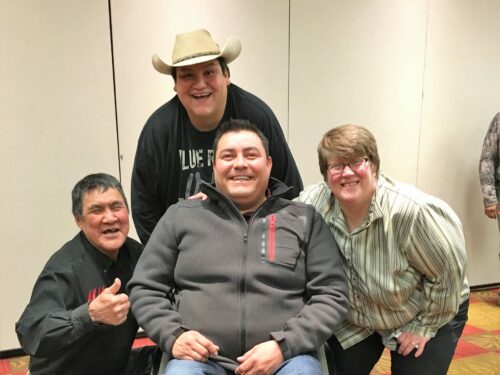
Doig River First Nation purchases commercial land in Fort St. John.
Canada makes financial offer to settle the Treaty Land Entitlement (TLE) claim.

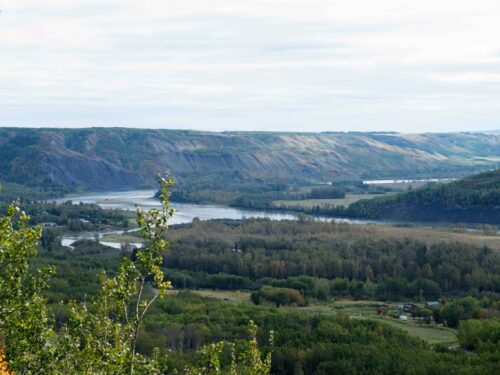

Doig River First Nation purchases land at Old Fort.
Doig River First Nation hosts public World Cafe on Treaty Land Entitlement (TLE) claim.

